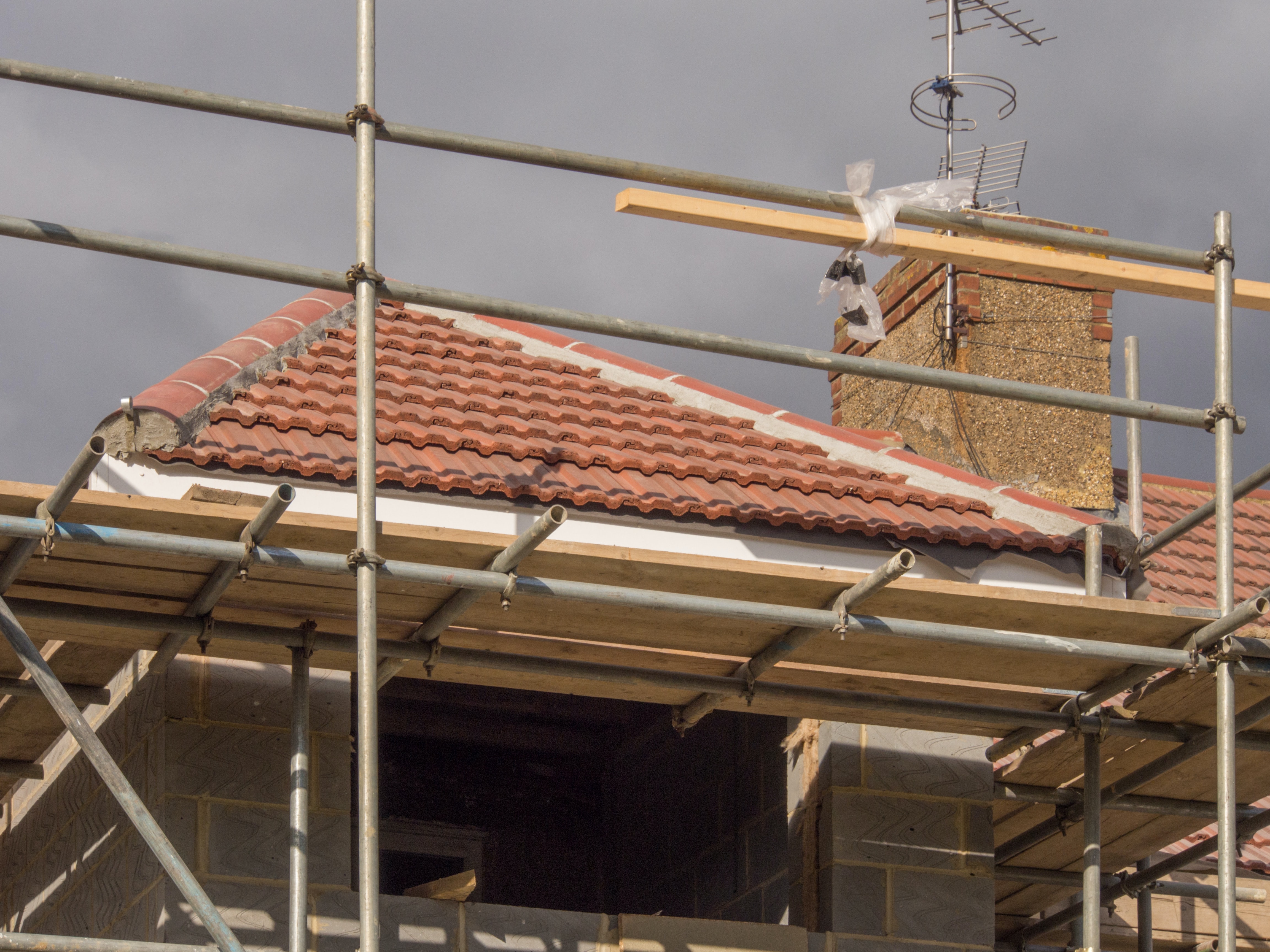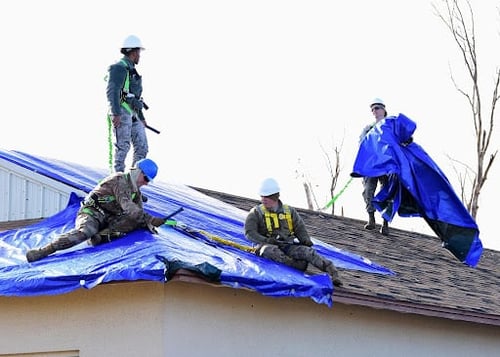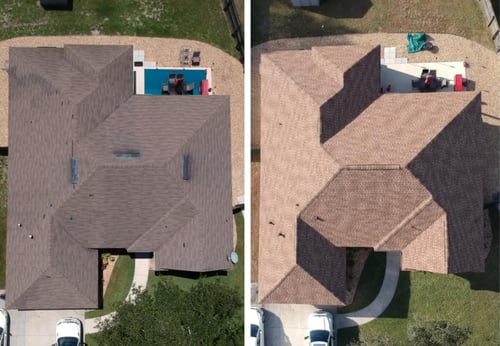
Roof replacements are a big deal. In fact, it’s one of the biggest investments you’ll make for your home, so you want to make sure it’s done right the first time around. There are many reasons homeowners opt for roof replacements, ranging from age and damages, to simply wishing to add more curb appeal to their home. If there’s one thing homeowners who have undergone a roof replacement in the past know, it’s that sometimes, they can be a hassle. If only there was a way to install a new roof over the preexisting one, wouldn’t that be nice?
Well, folks, I have good news for you. You can, in fact, install a new roof over your current roofing system, and the process is called a roof overlay. At RoofCrafters, we’ve been assisting homeowners like you with their roofing overlay projects for nearly 30 years, in turn saving them thousands of dollars, all while giving their home a botox-free facelift, making it the envy of every other middle-aged home on the block.
Many homeowners opt for overlays instead of complete replacements, especially if the foundation of their previous roof is sturdy. Roof overlays are commonly completed with metal roofing materials, adding aesthetics, insulation, and functionality without having to complete a tear-off. That being said, though, overlays have their own set of pros and cons.
Well, what are they? If you’re curious to learn more about roof overlays, you’ve come to the right place. In this article, you’ll learn about the replacement and overlay basics, when it's possible and impossible to complete a roof overlay, and the pros and cons associated with this method. So, let’s get started!
Roof Overlay vs Roof Replacement: The Basics
Roof replacements require a lot of time and hard work. It includes the complete reinstallation of the roof, the process of which starts with tearing your existing roof completely off. Everything, down to the deck of the roof is taken off and the process of installing a roof is done from scratch. No matter what layers of shingle your roof may have, it is all torn away to start the new roof installation. This process requires more labor and crew members to get it done in a timely manner.

On the other hand, reroofing, or having a roof overlay entails the addition of a new roof over the old. This is usually the case when the old roof has no underlying problems such as a leakage problem after a rain spell; It may just be reaching its end life and losing its functionality. This is also known as an overlay where no tearing-off takes place. But, it is essential to note that this process is typically done only once. This is because it is impractical to have more than two layers of shingles on your roof at a time.
When Is a Roof Overlay Possible?
Let’s break down some of the aspects which can make an overlay possible:
- If you live above the “Mason-Dixon line” which is the Northern regions of the United States, most shingle manufacturers will NOT warranty their shingles if they have been installed over old shingles in the Southern areas of the United States as it is too hot and humid causing the new shingles will blister and fail prematurely.
- When your old roof has reached the end of its lifespan.
- The granules on your shingles may be wearing off due to the harsh weather but have not resulted in curling yet.
- When there are no roof leaks or underlying problems.
- When you wish to change the exterior of your home at an affordable cost. You may want a new color, depth, and dimension to your roof during a home renovation project.
- When you wish to achieve a new look to your home without spending too much time and money on it. Reroofing is quick, effective, and costs way less than a roof replacement.
When Is a Roof Overlay Not Possible?
For roof overlays, there are a few factors that may make the process unfeasible, including:
- If you live below the “Mason-Dixon line” or in the Southern States.
- If your contractor advises on a roof replacement over reroofing, it’s best to go with their opinion. The roofing inspection conducted by them is sure to be accurate even if you are not experiencing any visible roof damage.
- If you don’t have asphalt shingles, reroofing may not be possible. This is because only shingles can be placed over old shingles. If you wish to have a wooden roof over shingles, it may not be possible as overlaying different materials may shorten the durability going forward.
- If you have already gotten a roof replacement done over your old roof, then doing it the third time may not be possible. This can make your roof too heavy and become unsafe to live under.
- If there is extensive damage to your roof, then going over the old roof is often not recommended. It is better to go for a full roof replacement instead.
- Curling shingles due to improper attic ventilation, trapped moisture, or inept installation. Here going over your roof is only possible if your shingles are flat and at a level. Otherwise, a roof replacement and having the shingles installed from scratch is the way to go.
What Are the Pros and Cons of a Roof Overlay?
To wrap it up, the following list of pros and cons of going over your old roof during a roof replacement can helps narrow things down, helping you make an informed decision of which option to go for based on the condition of your existing roof.
The Pros
- It’s cheaper than a roof replacement.
- Requires less labor and is less time-consuming compared to a roof replacement.
- A quick fix to your home renovation project, making your home look brand new in no time.
- Prolongs the longevity of your roof by 15-20 years.

The Cons
- Underlying roof issues may be overlooked.
- Makes the roof heavier.
- Two layers trap and retain more heat, making your home hotter and causing premature deterioration of the shingles.
- Possibility of bacterial and fungal growth under the top layer if not installed properly.
- The long-term cost of removing both layers and having a new roof replacement procedure done from scratch.
The Key Takeaway
A roof overlay is a great investment for any homeowner looking to boost their home’s curb appeal, all while saving money by avoiding a complete roof replacement. If you’re looking to save money on your electric bill, and increase the lifespan of your roof, an overlay is a great choice for you. On the contrary, if you already have too much-added weight to your roof, or too many previous damages, an overlay may not be the best choice for your next roofing project.
If you’d like to know more about installing a new roof over your preexisting system, your best plan of action is to get in touch with a professional roofing company. A skilled roofing contractor will be able to help assist you with an inspection and let you know if an overlay is a possibility. If you’re struggling to find the best contractor for the job, be sure to download “The Top 10 Most Critical Questions You Want to Ask Your Potential Roofing Contractor”.
This checklist includes several different prompts to ask your roofer to prepare you to hold the company accountable for its quality of work and services when it comes to your roof overlay. In the meantime, if you’re looking to learn more about roofing overlays and tear-offs, check out our article, “Roof Overlay Vs. Roof Tear-Off: Which is Better?” to better understand their key differences.
My name is Kevin Mills, and I am the lead estimator for RoofCrafters’ Tampa division. I’m originally from Michigan, and I enjoy hunting, fishing, and spending any free time outdoors. What I’m most passionate about, though, is helping business owners and homeowners alike achieve their roofing goals, all while providing a seamless customer journey.




